the Sponge Guide - www.spongeguide.org
Observed Characteristics:
yellow
green
brown
pink-lilac
purple-violet
cinnamon-tan
branching
encrusting
fan
lobate
massive
hard
Bahamas
Belize
Colombia
Martinique
Panama
Species Description and Notes
Description: Shape varies from 1-2 cm thick encrustations, 10-20 cm tall masses, even or lobed, to 2-5 cm thick branches, flattened or cylindrical, single, ramified or anastomosing, erect or repent. Bahamian specimens are usually encrusting; Colombian specimens from Santa Marta are usually massive; in Bocas del Toro, Panama, there are encrusting and branching. Size may reach 50 cm in lateral extension. Surface is usually even, rugose to the touch, with oscules scattered, up to about 5 mm in diameter, flush or on slightly raised, or on top of mounds, often with a lightly colored rim; massive specimens may have elongated crevices. Color also varies regionally, with Bahamian specimens being dark brown, those at Santa Marta pink to purple and at Bocas from yellowish to tannish to brownish; internal color always cream. Consistency is hard but not very brittle; the tissue is very dense, making it hard for a knife to cut through; very characteristically, there is a sticky feeling to the touch when cut. The choanosome is dense but riddled with small, <1 mm canals. The skeleton is an irregular reticulation of fasciculated multispicular tracts, some 50-750 µm thick, surrounding rounded to vertically elongated meshes, 70-500 µm in diameter. These fascicles are themselves made up of an isotropic to confused reticulation of single spicules or multispicular tracts, often with many free spicules strewn in confusion, in portions very dense and appearing dark under the microscope. At the ectosome, there is usually a “cortex” up to about 600 µm thick, overlying rounded subsurface spaces, up to about 1 mm in diameter; thick, fascicular tracts roof these spaces ending at the surface in thick erect spicule brushes. Overall, the ectosome usually looks as a paratangential reticulation of thick spicule tracts, 20-170 µm thick, forming rounded, 100-250 µm meshes, with erect spicule brushes at the intersections. Spicules are hastate oxeas to strongyloxeas, slightly curved, in a relatively wide size range, with thinner developmental stages. At the Bahamas they are slender, usually with blunt, mammiform, to strongylote ends, sometimes asymmetric, 87-158 µm long by 2.3-5-7 µm wide. Spicules at the continental coast of Colombia and at Panama are more robust hastate oxea with short, acute endings, reaching larger and thicker sizes, 75-223 µm long by 1.7-10.7 µm wide.
Notes: This species inhabits rocky shores and shallow to deep reefs, living exposed. Originaly described under genus Thalysias, it was also located under genus Xestospongia (see van Soest, 1984). Densa araminta de Laubenfels, 1934 is a junior synonym (see Zea, 1987, under Xestospongia proxima). The regional variability in predominant size and shape is intriguing, as it is the especially large local variability at Bocas del Toro, Panama. Whether there are more than one species in this assemblage of forms and colors, remains to be determined with other tools. The density of the tissue, the sticky texture when cut and the skeleton of oxeas in fasciculated tracts is the underlying characteristic of all specimens analyzed. In some cases, there are specimens that can be confused with Calyx podatypa (de Laubenfels, 1934), also pictured here, but the latter has a more cavernous interior (and hence a more crumbly consistency), more uniformly-sized spicules, a more isotropic skeletal reticulation, and lacks the sticky texture when handled. Another co-existing species with which it can be confused is Neopetrosia sp.-"soft", also pictured here, but it is readily distinguished by its softer, crumblier, non-sticky texture, and its more uniformly sized oxea spicules arranged in ascending tracts interconnected by single spicules. Deep-water Xestospongia cf. proxima sensu van Soest & Stentoft (1988) was recently described as new Neopetrosia eurystomata van Soest, Meestres & Becking, 2014. Vase-shaped, deep-water Neopetrosia ovata van Soest, Meesters & Becking, 2014 is also similar in skeleton and spicule size to N. proxima.
Author Reference: (Duchassaing & Michelotti, 1864)
Link: World Porifera Database
Tissue and Spicule Images
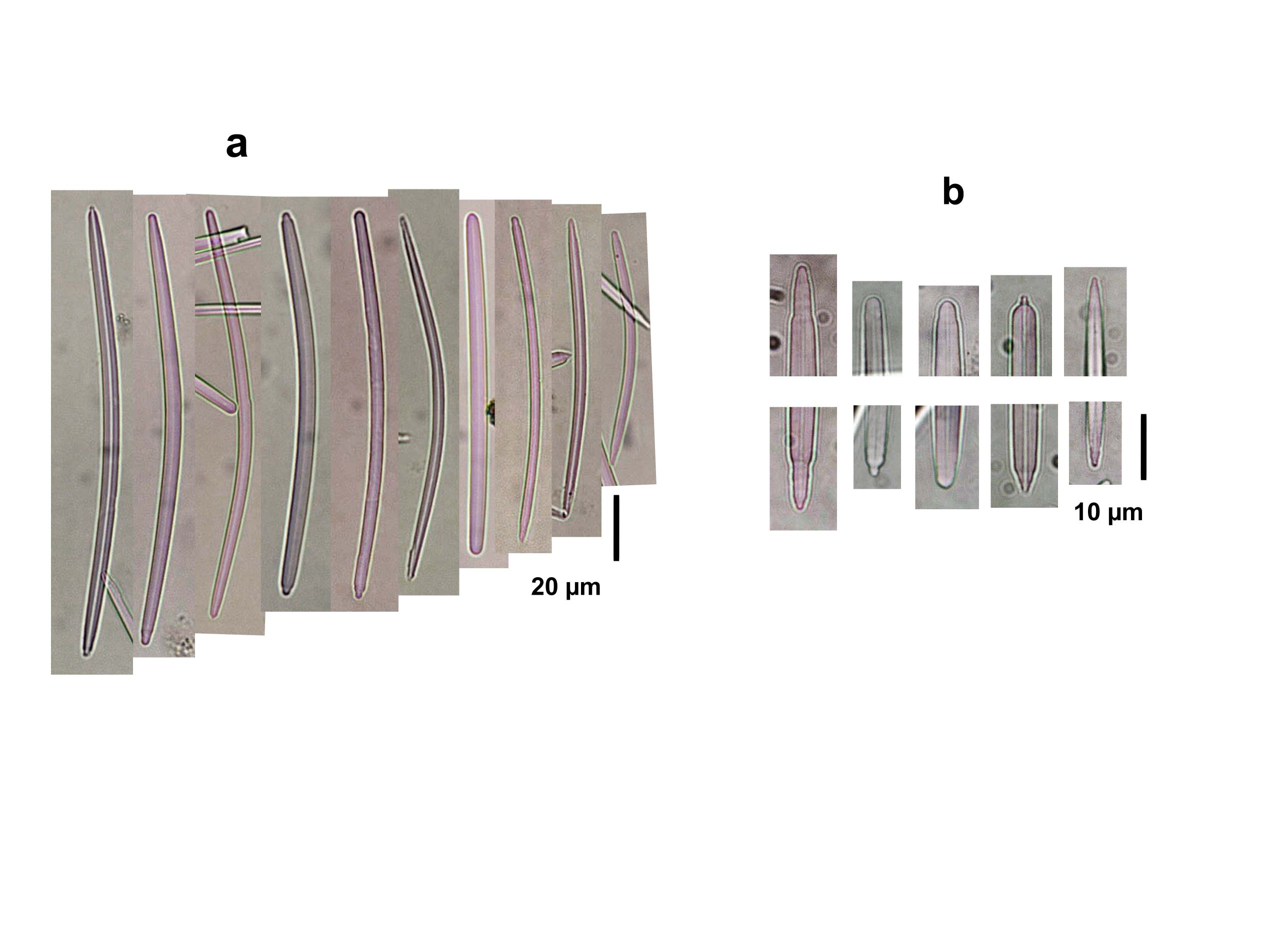
Spicule Images: a) Oxeas to strongyloxeas; b) ends of spicules. Sample from the Bahamas.
Source Specimen: http://www.spongeguide.org/ thumbs/00034/01151.jpg
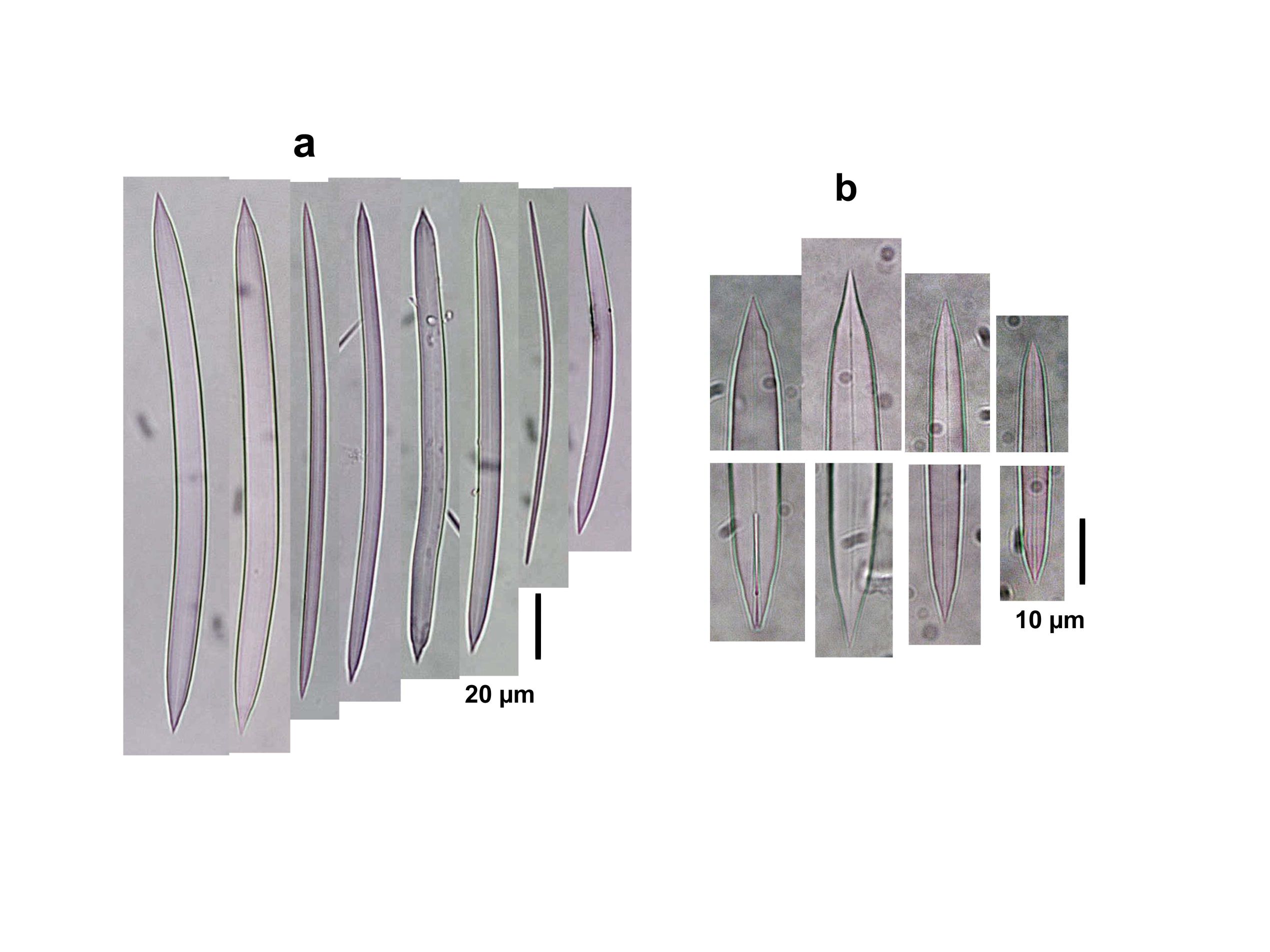
Spicule Images: a) Oxeas; b) ends of spicules. Sample from Panama.
Source Specimen: http://www.spongeguide.org/ thumbs/00117/02022.JPG
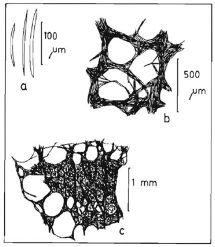
Spicule Images: Drawing of spicules and of skeleton of material from Colombia. a) spicules (oxea); b) tangential view of the ectosome; c) perpendicular section at the surface (from Zea, 1987, figure 34, as Xestospongia proxima).
No source specimen image available
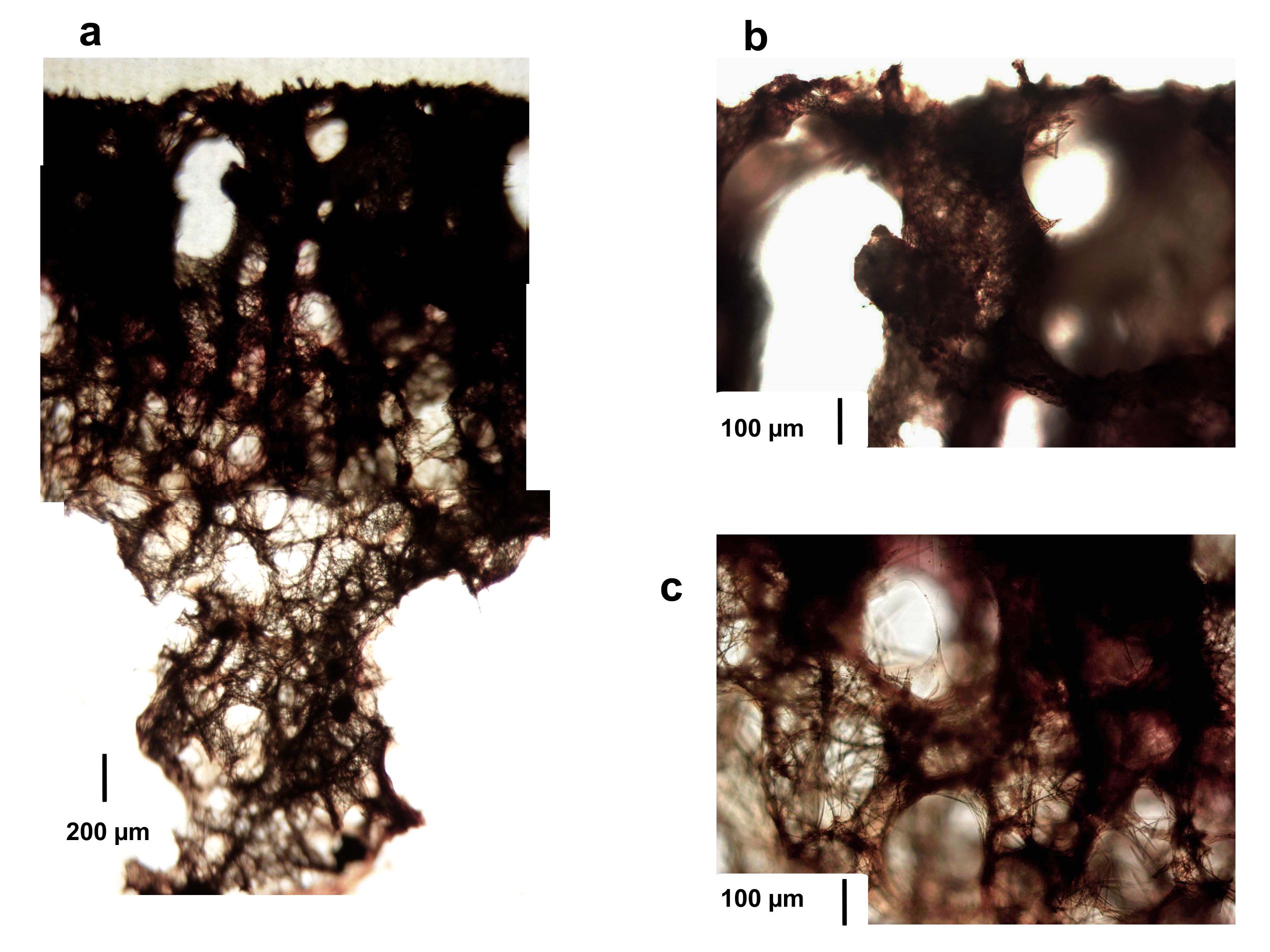
Tissue Images: a) Perpendicular section at the surface; b) enlargement at the surface; c) enlargement of the subsurface. Sample from the Bahamas.
Source Specimen: http://www.spongeguide.org/ thumbs/00006/00325.JPG

Tissue Images: a) Perpendicular section at the surface; b) tangential view of the ectosome, c) enlargement at the surface; d) enlargement of the subsurface. Sample from the Bahamas.
Source Specimen: http://www.spongeguide.org/ thumbs/00034/01151.jpg
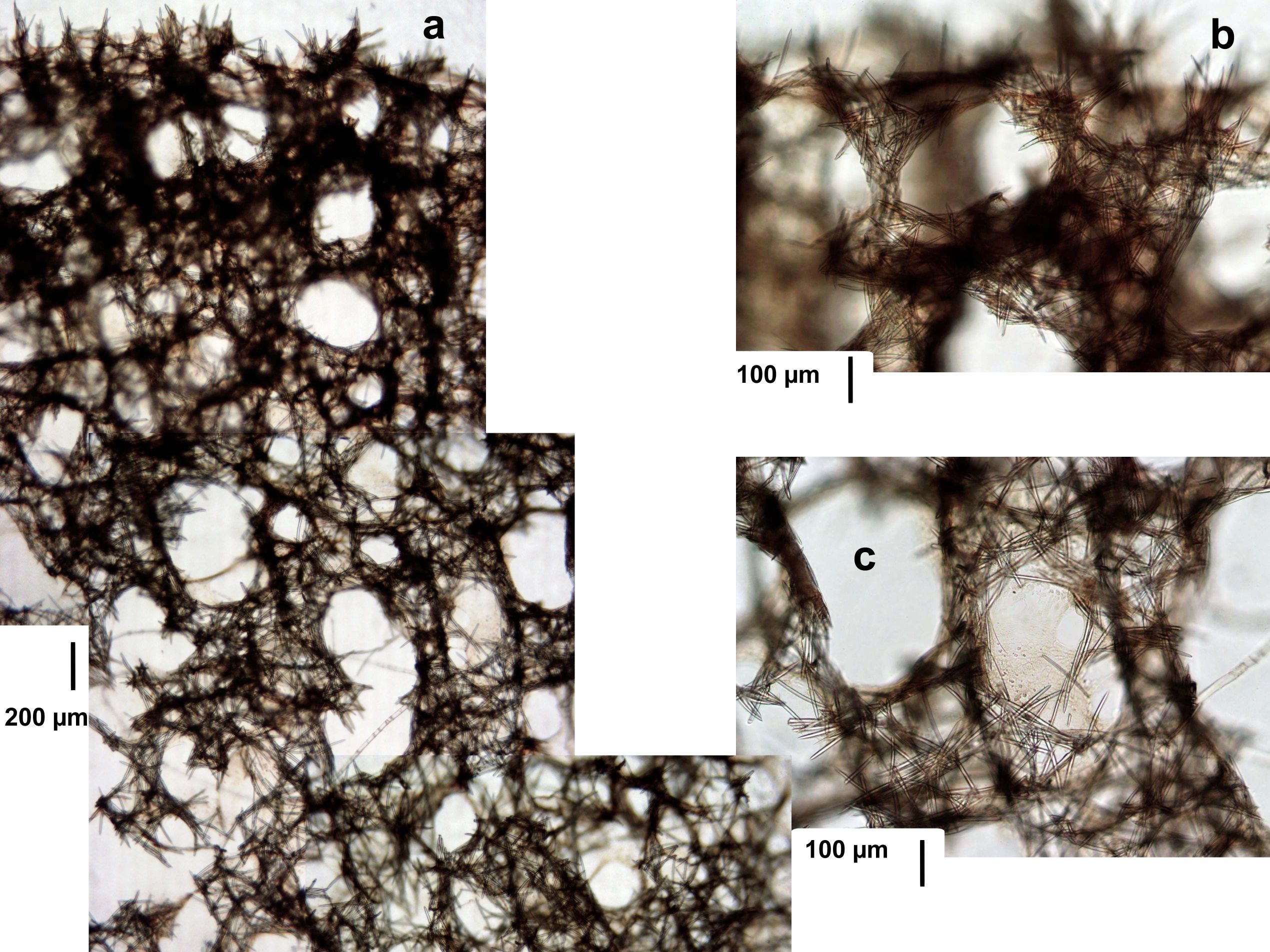
Tissue Images: a) Perpendicular section at the surface; b) enlargement at the surface, c) view of the choanosome. Sample from Bocas del Toro, Panama.
Source Specimen: http://www.spongeguide.org/ thumbs/00117/02022.JPG
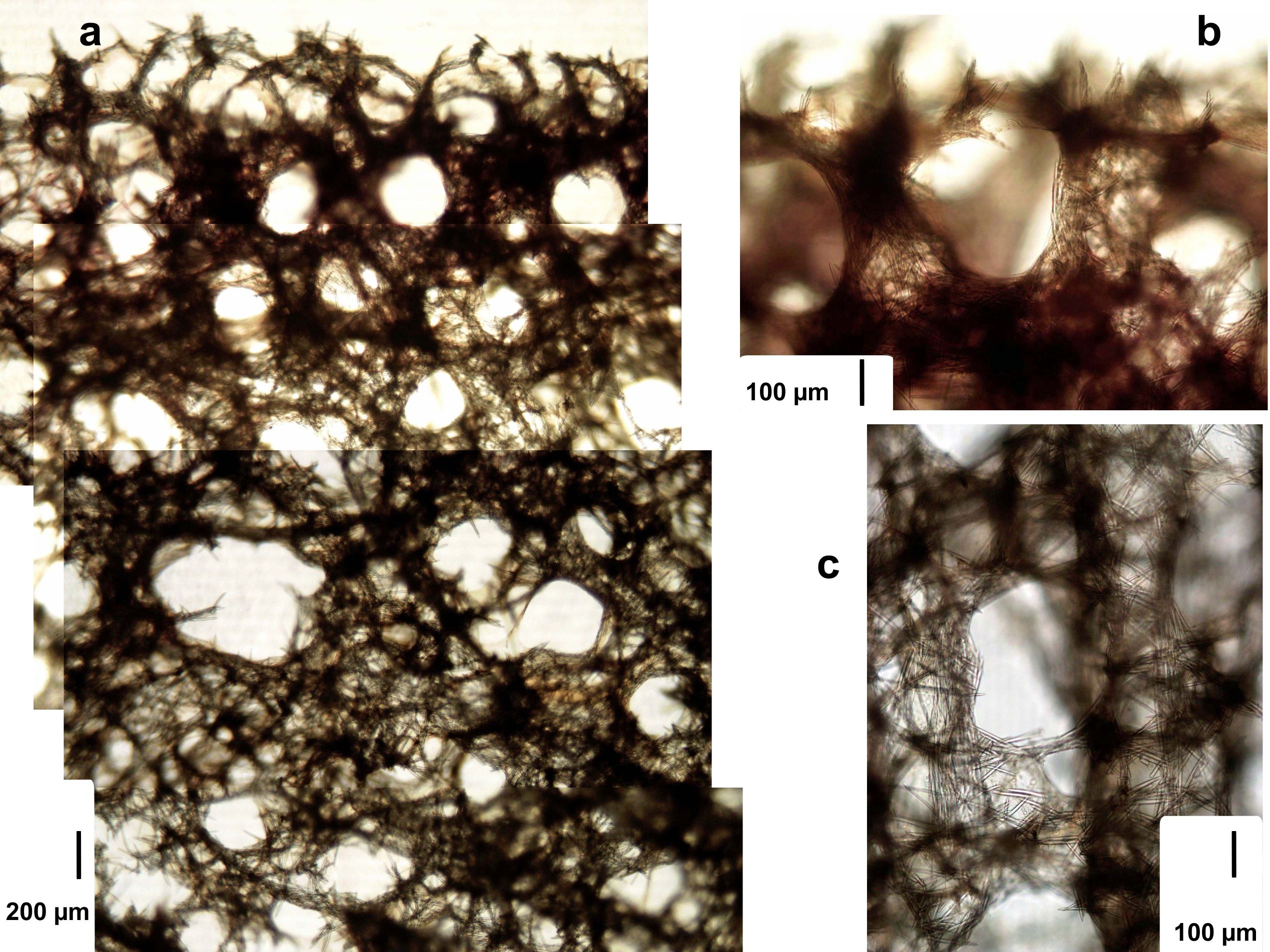
Tissue Images: a) Perpendicular section at the surface; b) enlargement at the surface, c) view of the choanosome. Sample from Bocas del Toro, Panama.
Source Specimen: http://www.spongeguide.org/ thumbs/00117/02147.JPG
Images
Neopetrosia proxima
Location: Bahamas, Stirrups Cays, N Berry Islands
Photographer: Sven Zea
Location: Bahamas, Stirrups Cays, N Berry Islands
Photographer: Sven Zea
![<i>Neopetrosia proxima</i> <br />[Bahamas, Stirrups Cays, N Berry Islands]](thumbs/00121/00709.jpg)
Location: Bahamas, Stirrups Cays, N Berry Islands
Photographer: Sven Zea
![<i>Neopetrosia proxima</i> <br />[Bahamas, Stirrups Cays, N Berry Islands]](thumbs/00034/01151.jpg)
Location: Bahamas, Stirrups Cays, N Berry Islands
Photographer: Sven Zea
![<i>Neopetrosia proxima</i> <br />[Belize, Pelican Cays]](thumbs/00117/02013.jpg)
Location: Belize, Pelican Cays
Photographer: Sven Zea
![<i>Neopetrosia proxima</i> <br />[Belize, Carrie Bow Cay]](thumbs/00117/02014.jpg)
Location: Belize, Carrie Bow Cay
Photographer: Sven Zea
Location: Martinique
Photographer: Sven Zea
Location: Martinique
Photographer: Sven Zea
Location: Panama, Bocas del Toro
Photographer: Sven Zea
Location: Panama, Bocas del Toro
Photographer: Sven Zea
Location: Panama, Bocas del Toro
Photographer: Sven Zea
Location: Panama, Bocas del Toro
Photographer: Sven Zea
Location: Panama, Bocas del Toro
Photographer: Sven Zea
Location: Panama, Bocas del Toro
Photographer: Sven Zea
Location: Panama, Bocas del Toro
Photographer: Sven Zea
Location: Panama, Bocas del Toro
Photographer: Sven Zea
![<i>Neopetrosia proxima</i> <br />[Colombia, Santa Marta]](thumbs/00117/02025.jpg)
Location: Colombia, Santa Marta
Photographer: Sven Zea
![<i>Neopetrosia proxima</i> <br />[Colombia, Santa Marta]](thumbs/00117/02026.jpg)
Location: Colombia, Santa Marta
Photographer: Sven Zea
Location: Colombia, Santa Marta
Photographer: Sven Zea
Location: Colombia, Santa Marta
Photographer: Sven Zea
Location: Colombia, Santa Marta
Photographer: Sven Zea
Location: Colombia, Santa Marta
Photographer: Sven Zea
![<i>Neopetrosia proxima</i> <br />[Colombia, Santa Marta]](thumbs/00117/02031.jpg)
Location: Colombia, Santa Marta
Photographer: Sven Zea
![<i>Neopetrosia proxima</i> <br />[Colombia, Santa Marta]](thumbs/00117/02032.jpg)
Location: Colombia, Santa Marta
Photographer: Sven Zea
![<i>Neopetrosia proxima</i> <br />[Colombia, Santa Marta]](thumbs/00117/02033.jpg)
Location: Colombia, Santa Marta
Photographer: Sven Zea
Location: Colombia, Santa Marta
Photographer: Sven Zea
Location: Colombia, Santa Marta
Photographer: Sven Zea
Location: Panama, Bocas del Toro
Photographer: Sven Zea